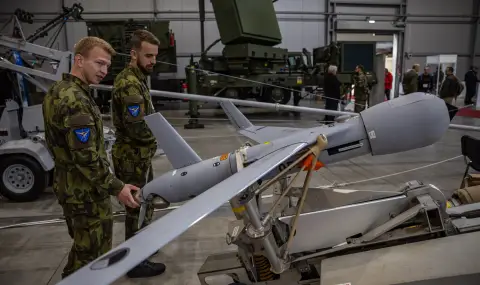Over the past 30 years, the Czech Republic has become the country with the largest car production per capita in the world. 2024 was a record: more than 1.4 million cars were produced in the country with a population of 10 million, which is an increase of almost 4% compared to the previous year. However, in the first quarter of 2025, production fell by 7.1%, mainly due to lower demand in Western Europe. This, in turn, is related to the problems in the European automotive industry, the slow transition to electromobility and US tariffs.
While car production is shrinking, the defense industry is experiencing a boom. Over the past three years, Czech arms factories have massively expanded their production and significantly increased their profits.
According to Aleš Rod from the Center for Economic and Market Analysis, the share of the Czech arms industry in the economy could increase many times over in the next few years. "There is demand in the arms industry for a decade or even 15 years to come. We see empty warehouses. What we produce barely has time to cool down and has already been sold".
The defense industry as a new economic engine?
Danše Nerudová, former rector of the "Mendel" University in Brno and member of the European Parliament's Budget Committee, has a similar opinion. "The defense industry could become a new engine of the Czech and European economy. It can use the supply capacity and workforce freed up by the automotive sector to stimulate economic growth and at the same time strengthen our security," says Nerudová.
Another prominent Czech economist, Petr Zahradnik, is a bit more skeptical. "Czech arms factories are experiencing a golden age, that's true. Their capacity is expanding, Czech defense companies are expanding their capital to the most advanced parts of the world," says the adviser to the European Economic and Social Committee in Brussels. "I don't believe that they will replace the automotive sector as the engine of the Czech economy," he adds. "I also don't want arms production to replace civilian production.".
Traditions in the arms industry
The territory of today's Czech Republic was a center of arms production even before the First World War. Between the two world wars and afterwards, Czechoslovakia was also one of the world's leading arms producers and exporters. For a long time, arms exports accounted for about one-tenth of all Czechoslovak exports.
According to experts, Czechoslovak weapons were the best in the Eastern Bloc and were exported to dozens of countries around the world. In the late 1980s, Czechoslovakia had a heavily armed army of several hundred thousand people and spent up to 20% of its state budget on defense. The end of the Warsaw Pact and the confrontation in Europe, as well as general disarmament in the early 1990s, accompanied by a significant reduction in the military budget, dealt a heavy blow to Czech defense companies.
The breakup of Czechoslovakia into two separate states in 1992 also led to the division of the defense industry: tank and heavy engineering production remained mainly in Slovakia, while aircraft manufacturing, the production of small arms, ammunition, radar systems and, above all, small arms remained in the Czech Republic.
The less than successful privatization, the reduction of Czech defense spending to one percent of GDP, and the reduction of the army to only about 20,000 soldiers - all this significantly weakened the Czech arms industry.
The war in Ukraine as a factor for growth
After Russia's full-scale invasion of Ukraine in 2022, Czech arms factories increased their production, often by hundreds of percent per year. The Aero aircraft factory, the pride of the Czech defense industry, has developed the new Skyfox combat and training aircraft, which will be used to train Ukrainian F-16 fighter pilots.
40% of the output of Czech arms factories goes to Ukraine, where joint ventures have also been established. Up to 90% of the output is exported. At the same time, however, purchases for the Czech army are also increasing. Last year, Czech defense spending reached two percent of GDP for the first time. Prime Minister Petr Fiala announced that in a few years they should reach 3%.
The profits of private owners of defense companies are also increasing: since the end of last year, the owner of the Czechoslovak Group, Michal Strnad, has doubled his assets to 230.5 billion crowns (about 9 billion euros). The situation is similar for other Czech arms manufacturers.
Arms factories hire thousands of employees
And this boom is likely to continue for the next few years. The ammunition manufacturer STV Group will triple the production of large-caliber artillery ammunition, which it supplies mainly to Ukraine. PBS Group also plans to double its production of rocket engines and drones.
The number of employees in companies is also increasing. STV Group alone plans to hire an additional 1,000 employees. According to the annual report of the largest Czech defense company, the Czechoslovak Group, which in addition to ammunition production also owns the Tatra military vehicle factory, already employs 14,000 people.
For comparison, the largest automobile group, “Skoda”, has about 20,000 employees at its main plant, and their number will continue to decrease in the future. At the end of February 2025, the head of “Skoda” Klaus Zellmer said that his company, which currently employs 41,000 people, plans to reduce its workforce by 15%. Many of these employees will likely be taken over by the defense industry. According to Czech recruitment agencies, they will not need serious retraining.
Author: Lubos Palata
